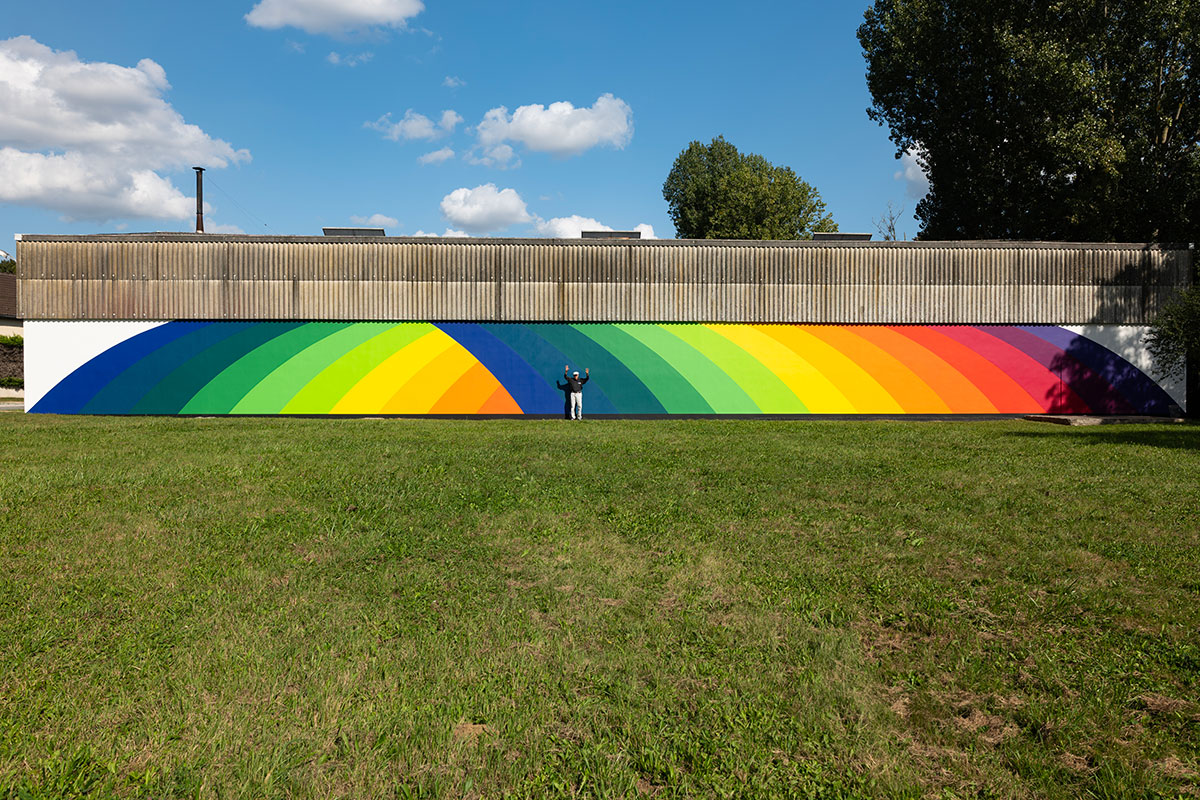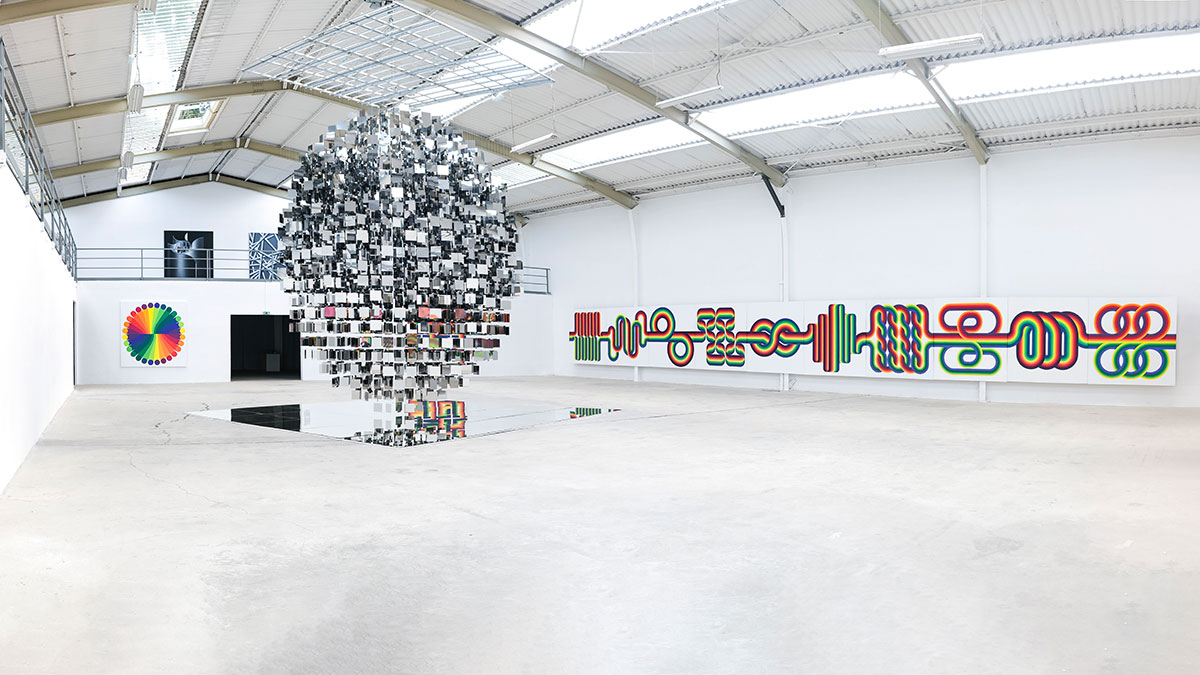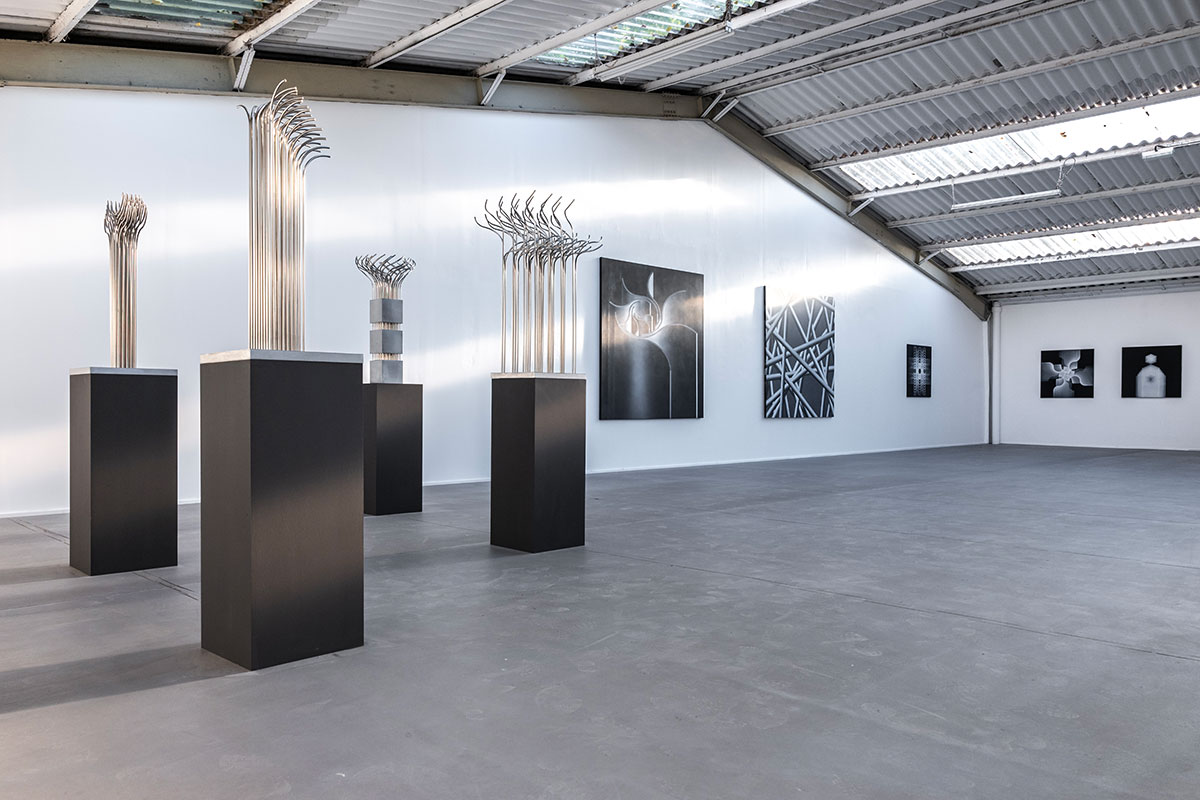PRESENTATION: Julio Le Parc-Aurora
 A precursor of kinetic art and Op Art, founding member of G.R.A.V. [Visual Art Research Group] and recipient of the Grand Prize for Painting at the 33rd Venice Biennale in 1966, Julio Le Parc is a major figure of art history. The socially conscious artist was expelled from France in May 1968, after participating in the Atelier Populaire and its protests against major institutions. A defender of human rights, he fought against dictatorship in Latin America. An uncompromising personality, in 1972 he refused to hold a retrospective exhibition at the Musée d’Art Moderne de la Ville de Paris, after flipping a coin to make the decision.
A precursor of kinetic art and Op Art, founding member of G.R.A.V. [Visual Art Research Group] and recipient of the Grand Prize for Painting at the 33rd Venice Biennale in 1966, Julio Le Parc is a major figure of art history. The socially conscious artist was expelled from France in May 1968, after participating in the Atelier Populaire and its protests against major institutions. A defender of human rights, he fought against dictatorship in Latin America. An uncompromising personality, in 1972 he refused to hold a retrospective exhibition at the Musée d’Art Moderne de la Ville de Paris, after flipping a coin to make the decision.
By Efi Michalarou
Photo: Galeria Continua Archive
The exhibition “Aurora” brings together a selection of nearly seventy works representative of the Julio Le Parc’s singular artistic language from the 1960s to the present day. These range across a variety of formats and media: acrylic paintings on canvas from iconic series, two- and three-dimensional modulations and contortions in stainless steel, wood or metal, works from the “Lumières” series, both historical and recent, and a monumental installation over five metres high. The exhibition is complemented by a unique virtual reality experience. The exhibition opens with a display of paintings on canvas in full colour, paying tribute to the beauty and complexity of Julio Le Parc’s systems, based on the notion of surface, including pieces from “Series 15”, which he began in the early 1970s. Le Parc extended his research to include color in 1959. Not only did the artist any trace of manual execution, of “brushstrokes”, but also any subjective composition. He chose fourteen colors, which he felt summed up all the possible variations of chromatic mixtures, and used them pure, uncut with black or white. Using this chromatic spectrum as a starting point, he created increasingly complex combinations, based on systems that were both rigorous and simple. Starting with one or two horizontally shifting spectra, the artist superimposed four spectra developed vertically, horizontally or diagonally, and sometimes four new spectra as well. The major work in the exhibition, consisting of ten paintings measuring two metres by two metres, “La Longue Marche” was created in 1974, following an aborted project for a major retrospective at the Paris Musée d’Art Moderne, which Le Parc decided not to participate in by a coin toss. The work stands out for its monumentality. It uses the fourteen-color system of the chromatic prism in prismatic meshes that unfold in fluid, sinuous sequences, exploring the visual effects of superimposition, weaving and overlapping. There is very little hierarchy in the organisation of the pictorial field. There is no dominant element, no centre from which the shapes radiate. Representative of the artist’s experiments with mobile elements, the monumental installation “Zepelín de acero” (2021), presented for the first time at the Fondation Hermès in Tokyo and previously unseen in France, reinterprets the use of light boxes characteristic of the artist’s research into the medium of installation, this time obscured by the steel of which they are composed. In this way, he questions a series of issues: the diversity of situations within a single experience, notions of movement, instability and probability, and the consideration of contingencies external to the work, in a characteristic distancing of his work from the notion of a stable, unique and definitive body of artwork. The exhibition continues with a selection of works entitled “Modulations”, in two or three dimensions and in relief, all in shades of black and white, covering a period from 1965 to 2019. The “Modulations” are part of a series of experiments that began in late 1974, the theme of which is rooted in the last elements treated with fourteen color- spectrum, as well as in the research into real volumes made by the artist since 1960. The technique he used (air brush, spray paint) produced a gradation from dark to light and a fairly precise modulation of the surface, leading him to develop new themes and explore a new field of research. In continuing the artist’s experiments with the plane, these works continue to be based on simple systems of organisation, the correlation of forms depending on the same principle in each case. In this way, the artist sought to challenge his certainties, while rigorously continuing to subject his discoveries to reflection and analysis. A major contribution to recent developments in Le Parc’s work, the contortions on show “Torsion 1 to “ (2004) and “Formes en contorsion” (2019) are exceptional in that they demonstrate the play of chance, the play of light and the surprise of movement. This emblematic movement infused into the form has its origins in certain sets of works from the “Mouvements surprise” series. The process uses flexible ribbons of mirrored steel forming circles on a black background, in front of which they slowly deform due to a mechanical action coordinated by motors of different speeds. The exhibition also features a selection of light works rarely shown together in France, including “Continuel lumière mobile” (1963-2013), “Continuel lumière boîte” (1959-1965) and “Continuel lumière avec quatre formes en contorsion (1966-2012). Begun in late 1959, Le Parc’s experiments with light scatter light raysinto small boxes, the aim of which is to reproduce, multiply and combine squares and circles using the fourteen colour-spectrum, by means of screens made from Plexiglas sheets in the shape of prisms. The artist’s aim is to capture the potential for chromatic variations thus created, and to manifest them in a single visual field. Anchored in movement, these experiments are in keeping with the artist’s principle of distancing himself from a fixed, stable and definitive body of work. The viewer is captivated by the development of a multitude of changes, the uniform medium of the elements or forms accentuating the highlighted instability. These works are characterised by their structure and, at the same time, by the absence of any composition.
Photo: Julio Le Parc, Aurora, Exhibition view, 2023, Galleria Continua-Les Moulins. Photo: Hafid Lhachmi, Courtesy Galleria Continua
Info: Galleria Continua, 46 rue de la Ferté Gaucher, Boissy-le-Châtel (Seine-et-Marne), France, Duration: 23/9/2023-13/1/2024, Days & Hours: Wed-Sun 12:00-18:00, www.galleriacontinua.com/





